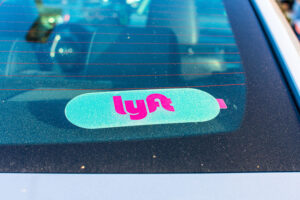
How Long Do Lyft Accident Claims Take to Resolve?
Getting hurt in a Lyft accident can leave you with more than just physical pain. The process of filing an insurance claim and seeking fair compensation often adds confusion, stress, and delays to an already difficult situation. One of the first questions many people ask after a rideshare crash is: how long will this take to resolve?
Unfortunately, there’s no universal answer. The timeline for a Lyft accident claim depends on several factors, including how severe your injuries are, who is at fault, what evidence is available, and how cooperative the insurance companies are. Some claims wrap up in a few months. Others, especially those involving contested liability or high medical costs, can take over a year to resolve.
This guide walks through each stage of the process and explains what might speed up—or slow down—your Lyft accident claim. Whether you were a passenger, pedestrian, or another driver involved in the crash, understanding how these claims work can help you prepare for what’s ahead.

Understanding the Lyft Accident Claim Timeline
The moment a Lyft accident occurs, a clock starts ticking—but it’s not a predictable one. Unlike a standard fender bender, a Lyft-related crash adds additional layers of complexity. There may be multiple parties involved, including Lyft’s corporate insurer, the driver’s personal insurance, and potentially other motorists or pedestrians. That means every stage of the claim—notification, investigation, negotiation, and resolution—can take longer than you might expect.
In general, it’s helpful to break down a rideshare claim into stages: initial reporting, medical treatment, claim evaluation, settlement negotiation, and—if necessary—litigation. Each phase comes with its own timeline and challenges. For example, if injuries are ongoing, medical treatment could delay the claim until your condition stabilizes. If there’s a disagreement about fault, it may take time to collect police reports, surveillance footage, or eyewitness statements.
A simple Lyft claim with clear liability and minor injuries might be resolved in a few months. But if there are serious injuries or questions about Lyft’s coverage limits, the process can stretch into a year or more. The key takeaway is that patience—and preparation—matter. Knowing what’s ahead can help you avoid surprises as your claim progresses.
Factors That Influence the Timeline of a Lyft Accident Claim
Several variables can impact how quickly your Lyft accident claim is resolved. Understanding these factors early on can help set expectations and guide your next steps.
First, the severity of your injuries plays a major role. Insurance companies won’t finalize a settlement until they understand the full extent of your medical treatment, including follow-up care and recovery time. If your injuries are still evolving, the process can’t move forward until you reach what’s called maximum medical improvement.
Another factor is liability disputes. If it’s not immediately clear who caused the crash—whether it was the Lyft driver, another motorist, or someone else—it may take longer to determine fault. Insurers will need time to investigate, which can involve requesting police reports, accident reconstruction, and driver phone records.
In some cases, delays come from the insurance companies themselves. If Lyft’s insurer or a third party disputes the claim amount or coverage limits, negotiation may become drawn out.
Other contributors to the timeline include:
- Availability of documentation and evidence
- Cooperation from all parties
- Whether legal action becomes necessary
Each of these factors can speed up or slow down the process. A clear claim with good documentation is more likely to resolve quickly.
What to Expect Immediately After a Lyft Accident
The first few days after a Lyft accident are critical. This is when you lay the groundwork for a strong claim—and potentially shorten the resolution timeline.
Start by seeking medical attention, even if your injuries seem minor. Not only is this essential for your health, but prompt medical records also serve as important evidence. Any delay in treatment may be used by insurers to downplay your injuries.
Next, you or your attorney should report the accident to Lyft through the app or website. Lyft’s insurance coverage depends on the driver’s status at the time of the crash—whether they were waiting for a ride, en route to pick up a passenger, or actively transporting someone.
You’ll also want to gather evidence at the scene if possible. This includes:
- Photos of the damage and surroundings
- Contact information for the driver and witnesses
- A copy of the police report (once available)
Finally, it’s smart to consult an attorney early in the process. A lawyer can communicate with Lyft’s insurance team on your behalf and help you avoid mistakes that could delay or weaken your claim. Early legal guidance can often prevent small issues from becoming major setbacks later.
The Role of Medical Treatment in Claim Delays
One of the most important—but often overlooked—factors in the timeline of a Lyft accident claim is how long your medical treatment lasts. Insurance companies need a full picture of your injuries before they’re willing to discuss settlement. That means they want to see not just the initial ER visit, but follow-up appointments, imaging results, specialist evaluations, physical therapy outcomes, and any long-term treatment plans.
If your injuries are severe or require ongoing care, the claim process will usually be delayed until you reach a point known as maximum medical improvement (MMI). This is when doctors determine that you’ve recovered as much as possible or that your condition has stabilized. Only then can your damages—including pain and suffering—be properly evaluated.
Rushing to settle before you reach MMI may leave you without enough compensation to cover future care. However, that decision can depend on your financial situation and advice from your attorney.
In short, medical recovery is one of the biggest drivers of your claim’s length. The more extensive the treatment, the longer it may take to resolve your case. But in many cases, waiting can result in a stronger, more accurate settlement.
How Insurance Companies Handle Lyft Claims
Dealing with insurance is rarely quick or simple—and that’s even more true when a rideshare company like Lyft is involved. Depending on the status of the driver at the time of the accident, different insurance policies may apply.
If the driver was off-duty, only their personal auto policy may cover the damage. If they were waiting for a ride, Lyft’s limited contingent liability policy might apply. But if the driver was en route to pick up or transport a passenger, Lyft’s $1 million liability policy may be triggered. Sorting out which policy applies is one of the first steps—and it can take time.
After that, the insurance company conducts its own investigation, which can include reviewing police reports, contacting witnesses, and assessing vehicle damage. They may also request medical records or statements from you. In many cases, they’ll try to minimize the payout or challenge parts of your claim.
Insurance adjusters work to protect their company’s bottom line. That’s why many Lyft accident claims go through several rounds of back-and-forth negotiation. While some cases settle in a few months, others may require legal pressure to move things forward.
When a Lyft Claim Turns Into a Lawsuit
Not every Lyft accident claim ends in a quick settlement. In fact, if there’s a major disagreement over fault or damages, the next step may be filing a lawsuit. This doesn’t necessarily mean your case will go to trial, but it does shift the timeline significantly.
Lawsuits introduce new phases: discovery, depositions, motion filings, and potential court hearings. These stages can take several months to over a year, depending on how crowded the local court docket is and how complex your case becomes. Some lawsuits settle before trial, but others continue all the way to a verdict.
Why do some claims escalate to litigation? Common reasons include:
- Denial of liability by Lyft or their insurer
- Disputes over the extent of injuries
- Low settlement offers that don’t reflect long-term costs
- Allegations of gross negligence or reckless behavior
Filing a lawsuit may seem like a big step, but sometimes it’s necessary to get the compensation you deserve. An experienced attorney can help weigh the pros and cons of litigation based on your specific circumstances and keep you informed at every stage of the process.
The Impact of Liability Disputes on Timelines
Determining who is at fault in a Lyft accident isn’t always straightforward. In some cases, multiple parties may share liability—including the rideshare driver, another motorist, or even a government entity responsible for road conditions. These disputes can significantly delay the resolution of a claim.
Insurance companies often push back when fault is unclear or shared. They may argue that the Lyft driver was not primarily responsible or claim that your actions contributed to the crash. In other cases, they may try to shift blame entirely onto another driver or pedestrian.
To resolve these disputes, additional evidence may be needed—like dashcam footage, witness statements, accident reconstruction reports, or police investigations. Gathering this evidence takes time, especially if expert analysis is involved.
The longer the liability dispute goes unresolved, the longer your claim stays open. This is why having legal guidance from the start is so helpful. A lawyer can help secure and preserve crucial evidence, respond to counterclaims, and advocate for your version of events during negotiations or litigation.
Until fault is clearly established, most insurers will hesitate to issue a settlement. That’s why resolving liability is often a key step toward resolving your Lyft accident claim.
The Role of Legal Representation in Claim Duration
Hiring a lawyer doesn’t automatically make a case take longer—but it does mean the process will likely be more thorough and better protected. While it’s possible to settle a Lyft claim on your own, legal representation tends to result in more favorable outcomes—especially for injury cases.
Attorneys work to build the strongest claim possible. That includes gathering evidence, reviewing insurance coverage, managing communication with adjusters, and helping you avoid common mistakes that could hurt your case. In many cases, they’ll also handle negotiations so you don’t have to deal directly with insurers.
One reason claims may take longer with a lawyer involved is that they often push back against lowball offers. Rather than accepting a quick but insufficient settlement, an attorney may recommend waiting until the full extent of your injuries is known. They can also advise whether litigation is necessary if the insurer refuses to negotiate fairly.
In short, a lawyer may extend the process slightly—but often in your favor. Many claims still resolve without a lawsuit, even with legal help. And if you do need to go to court, having representation from day one can ensure your case is ready when the time comes.
Settlements vs. Trials: Timeline Differences
A major factor in how long a Lyft accident case takes to resolve is whether it settles out of court or proceeds to trial. Most personal injury claims—including those involving rideshare companies—end in settlement. This is often quicker, more cost-effective, and less emotionally taxing than going to court.
Settlement negotiations can take anywhere from a few months to over a year, depending on the complexity of the case and willingness of the insurer to offer fair compensation. Once an agreement is reached, it typically takes a few weeks to finalize and disburse funds.
On the other hand, if your case goes to trial, be prepared for a longer timeline. Filing the lawsuit, completing discovery, attending pre-trial hearings, and setting a trial date can easily stretch the process out for 12 to 24 months—or longer in some jurisdictions.
While some cases settle after litigation begins, others go all the way to a jury verdict. If appeals are involved, the timeline can stretch even further.
Whether to settle or litigate is a personal and legal decision based on your circumstances. A good attorney can help you weigh the risks, timelines, and likely outcomes of each option.
How to Speed Up the Process Without Sacrificing Value
While some delays are unavoidable, there are ways to help your Lyft accident claim move forward more efficiently—without cutting corners on your recovery or compensation. Here are a few general tips to help keep your case on track:
- Seek prompt medical treatment after the accident and follow all recommendations.
- Document everything, including photos of the scene, receipts, and daily symptoms.
- Avoid gaps in care that might lead insurers to question the seriousness of your injuries.
- Communicate with your lawyer regularly and provide requested documents quickly.
- Respond to insurance inquiries, but only with guidance from your attorney.
One of the most common causes of unnecessary delay is miscommunication or incomplete documentation. Keeping thorough records and staying proactive about your recovery can help build a solid case early on.
It’s also helpful to align your expectations. While everyone wants fast results, claims based on serious injuries or contested liability often take longer. That’s not always a bad thing—taking the time to build a strong claim can make a big difference in the final outcome.
By staying engaged in the process and leaning on experienced legal guidance, you can help resolve your case without compromising on what you deserve.
Contact Boohoff Law Today for a Free Consultation
If you or someone you love has been injured in a Lyft accident, don’t wait to seek guidance. Every day you delay can impact your ability to recover the compensation you deserve.
At Boohoff Law, we understand how confusing this process can feel—and we’re here to help. Reach out to our experienced legal team to schedule a free consultation and learn more about your next steps.
Call (813) 445-8161 in Tampa, (813) 321-7878 in Brandon, (941) 888-0848 in North Port, or (877) 999-9999 in Seattle.











